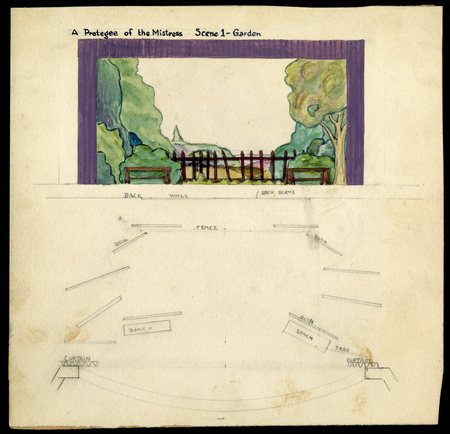From 1926-1940, John Laurence Seymour held an instructor position for the departments of both the Dramatic Arts and English at Sacramento Junior College. As part of his responsibilities for the Department of Dramatic Art, he was tasked with directing all of the school’s theatrical productions. Under Seymour’s careful direction, dozens of productions opened to praise from the local community.
Seymour kept mementos of seemingly all of the productions he directed, meaning that the John Laurence Seymour Papers collection is full of programs and photographs from various Sacramento Junior College productions. Below are some mementos from “A Protegee of the Mistress”, performed on May 3, 1929. This production was the first performance of the play in America.
The photos below are scans of hand painted scenes used for the set design. Note that in the photo with the actors, you can see how the set created for scene 3 translated to real life!


